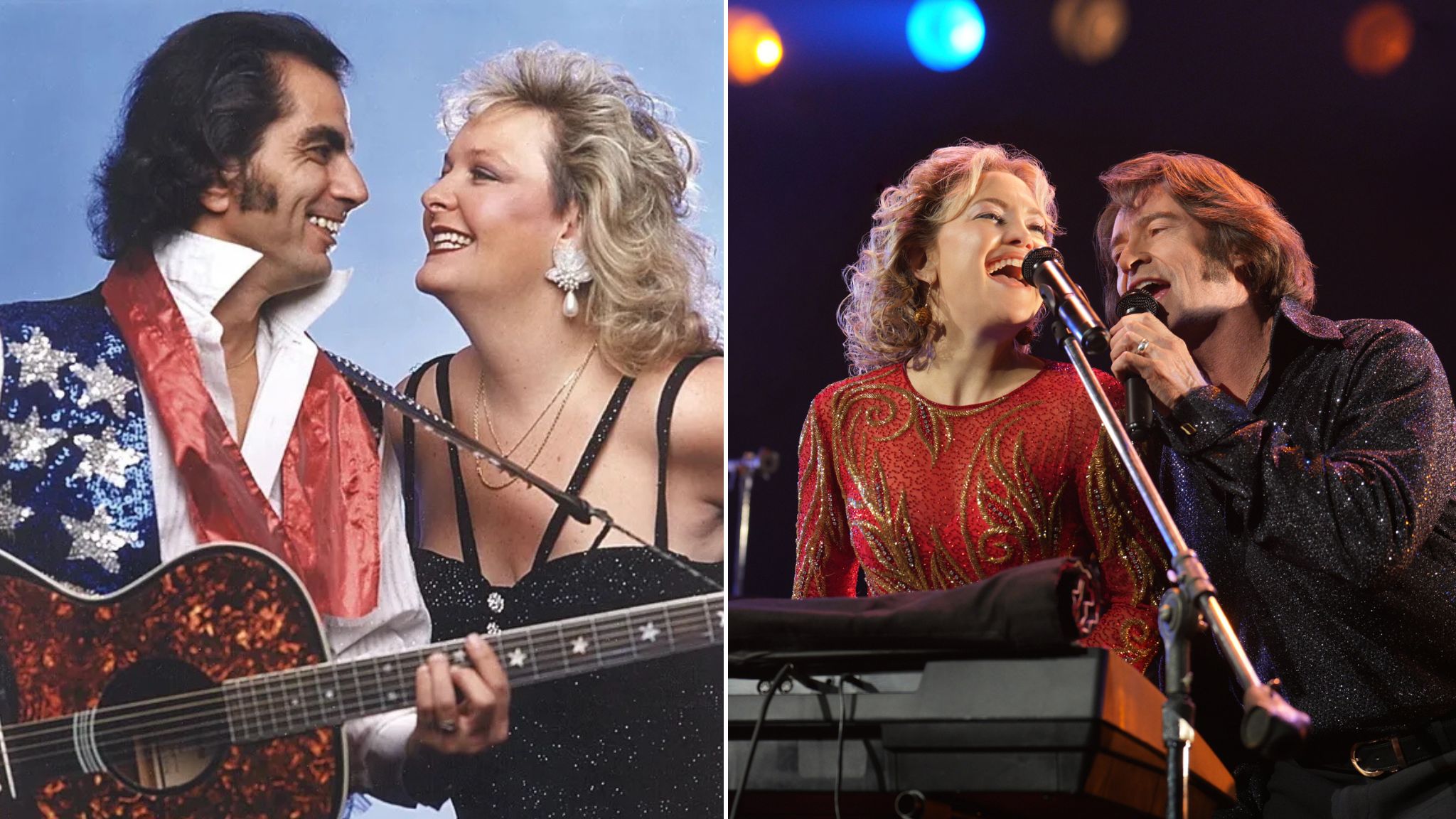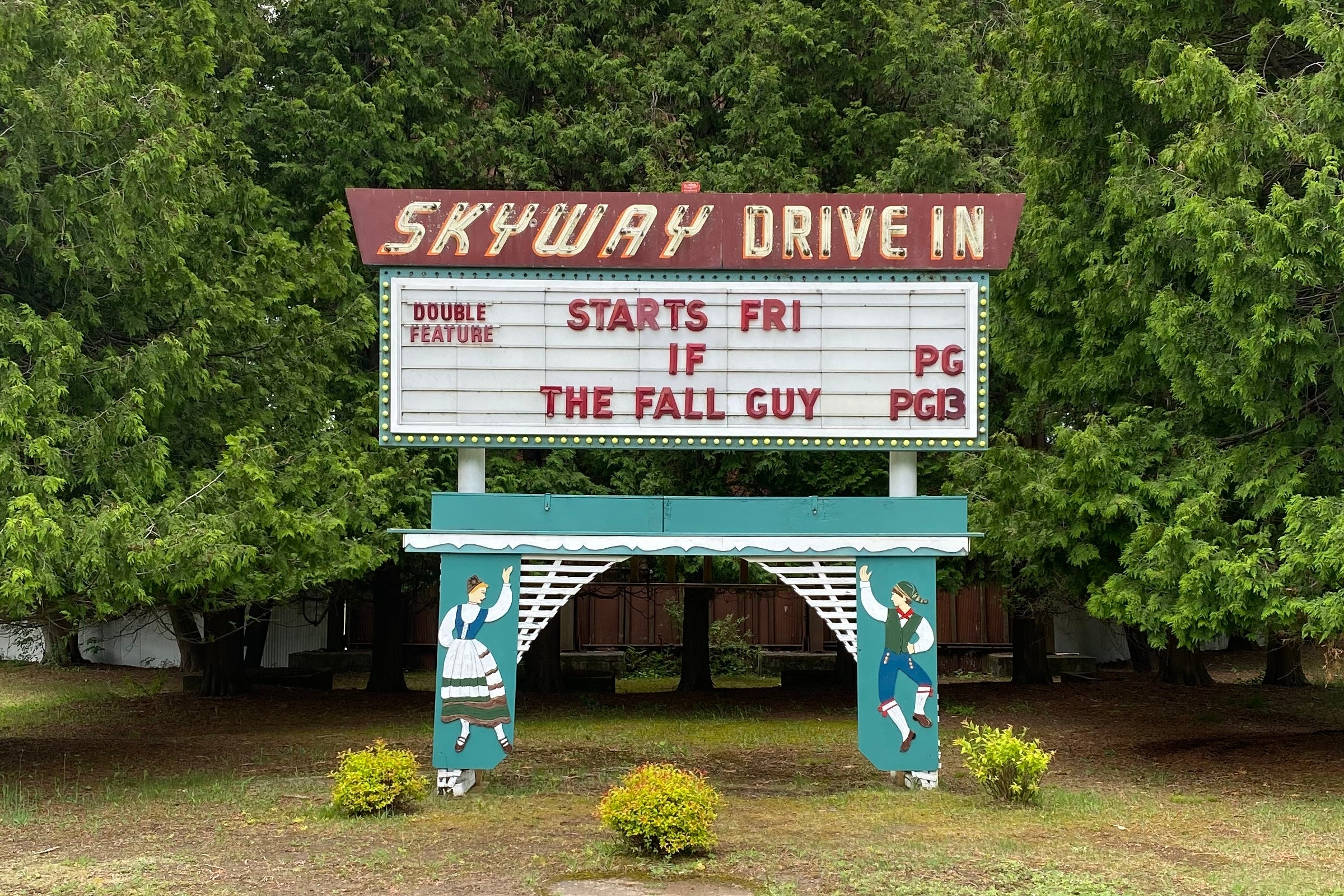In this Member Drive edition of the show, we revisit interviews with Wisconsin actor Mike Moh, author Wendy Mitchell, and musician/producer Warren Zanes.
Featured in this Show
-
Once Upon A Time … In Waunakee: Actor Mike Moh On His Dream Role
Mike Moh was teaching a martial arts class in his dojo in Waunakee when his agent called to inform him that acclaimed filmmaker and auteur Quentin Tarantino was making a new film and that iconic martial artist and film star Bruce Lee would be a character in it.
Moh was an ardent admirer of Lee’s work. Lee was someone Moh viewed as a trailblazer in terms of Asian American representation in films and had long desired to portray him on the big screen.
“To be able to play Bruce has been a lifelong bucket list thing for me ever since I started acting,” Moh told WPR’s “BETA.” “There’ve been a few opportunities, where I was very close to playing Bruce, but for whatever reason, some of those things didn’t go my way. So to have it all come together in a project like this with a maestro director like Quentin Tarantino — it’s been worth the wait.”
Since a chance entry into acting via the 2006 Jackie Chan film “Rob-B-Hood,” Moh had been splitting his time between Wisconsin and Los Angeles. So, he packed his bags that same night and flew to California to film an audition tape.
“I was given this very covert and secret manila envelope which had the scene from the movie with Bruce Lee. And they wouldn’t let me take it home. So I had to study it. And then the next day I did the audition and I went home,” he said.
It would be a few weeks before Moh would hear back about this project which would end up being the Academy Award nominated (and winning) film, “Once Upon A Time…In Hollywood.” However, when he did hear back from his agent, he heard Tarantino liked his tape and wanted to meet him.
The meeting went great as the two bonded over a mutual love of Bruce Lee and Shaw Brothers Hong Kong cinema.
“He knows more about kung fu movies than I do,” said Moh. “He’s probably the world’s foremost movie fan, and he knows everything.”
Moh had developed a quick chemistry with the director, but Tarantino needed to find out if Moh would have chemistry with the rest of the cast, which included Academy Award-winners Leonardo DiCaprio and Brad Pitt, and Oscar-nominated actor Margot Robbie. So, Moh was invited to a table read of the script.
“I settle into this room, this long table with a bunch of placards and a bunch of people hanging around producers. And I see Dakota Fanning, I see Emile Hirsch, I see Luke Perry,” said Moh. “And I think I was the only person at that table read that had not been officially offered the role.”
Moh relied on his stringent discipline of practice. He’s never going to be out-prepared by anyone in any situation whether competing in a martial arts studio or sharing a scene. He had memorized the exact page his scene was on in the script and knew once he had his shot, he was not going to play it safe.
“Every page that was read by all those actors across the table from me got me one page closer to when I was going to have my moment,” explained Moh. “I made sure that I was full on Bruce mode, full on performing. And Brad and I actually started getting into it, like eye contact and just like this fun banter and everybody at the table is laughing.”
Moh said he believes the table read was when he officially landed the role. He was asked to fill in for a few more parts during the read, which was a good sign, and he felt very comfortable by the end of the session. A few weeks later while he was swimming in his neighborhood pool back in Waunakee he got the news.
“I’m swimming in the pool with my kids and I get my call and I get the news and I freak out a little bit. I’m sure my neighbors were wondering what I was so giddy about, and I do a big belly flop into the pool to celebrate and it was a good day,” recalled Moh.
Moh then began a rigorous prep for the role. He let his hair grow out and re-watched all of Lee’s films and interviews to nail down the icon’s cadence and mannerisms.
“As far as his energy and as far as his presence and his attitude, that’s what I really wanted to capture,” said Moh. “You would notice certain mannerisms he would have with his hands or with his body or how he would physicalize a lot of his phrases, kind of like he does in martial arts. So he uses all of his being to accentuate a point.”
Sharing a scene with Pitt on a Tarantino set would be nerve wracking for any actor. Moh said Tarantino treats each of his films like a child and his crew is as tight-knit as a family. To up the ante even more, Tarantino wanted Moh to deliver a four-minute monologue in one continuous shot that ended in a stunt.
“Before we started shooting, he said, ‘Look, it’s all on you because I have an idea of how I want to shoot this scene. It’s going to be a one-shot take. This is how I want to do it, and if you don’t nail it, I’m gonna have to change it. And this is the way I want to shoot it. But I wouldn’t have hired you if I didn’t believe that you could do it.’ So as my knees are quivering, I said, ‘Yes, yes, sir,’” Moh said.
Moh and Pitt nailed the scene on the fourth take and even though Moh’s presence in the film is only about five minutes in a nearly three-hour movie, he left not only an impression on the audience, but on his co-star as well. When Pitt accepted the Oscar for Best Supporting Actor, he thanked Moh specifically.
While Moh’s performance was universally praised, Tarantino’s depiction of Lee was met less enthusiastically from Lee’s family. Lee’s daughter Shannon called out the director on his “disrespectful” depiction of Lee as cocky and brash.
For his part, Moh understands Shannon’s position, but also understood the gravity of Lee’s position as one of the lone faces of Asian Americans in TV and film of the era and the fight he needed to have for that visibility.
“Even though he was kind of on his way to super stardom, he never got to experience how famous he became. So he was still fighting his way, trying to change the perception of what an Asian man is on screen representation-wise,” Moh said. “So he had to be a little cocky and a little boastful, and that’s what was so important to me. To see that, ‘Oh, an Asian man doesn’t have to be subservient or weak. You can be strong and confident and have a little attitude.’”
Moh still teaches his classes in Waunakee. He said after the premiere and awards season he’s “creatively hung over a little bit because I had just come off my dream role. So now I’m trying to figure out what is it that I really, really want to do.”
“I’ve got a new belief in myself that I don’t have to just do the action roles. I can do the drama roles, I could do comedy roles, I could do different things,” said Moh. “Variety is the spice of life, and I’m excited at all the opportunities that may or may never come.”
-
From Lassie To Beethoven: Author Celebrates Dog Actors
Wendy Mitchell is often in Los Angeles for work. As a contributing editor and writer for several entertainment zines, Mitchell is usually covering more serious film industry fare like how movies are produced or financed. However, on one trip to Tinsel Town, Mitchell bumped into some generational royalty.
“I was having some meetings in LA and happened to meet a dog that was descended from the original Pal who had played Lassie,” Mitchell told WPR’s “BETA.”
That triggered an idea for Mitchell.
“That just really got me thinking about Hollywood history and dogs and why we need to celebrate these canine actors as well as the human actors,” Mitchell said.
So Mitchell compiled a fun and comprehensive list of some of the most iconic pooches from the silver screen in her book, “Citizen Canine: Dogs in the Movies.”
The book covers more than 100 years of film history and 60 dogs. It features dogs from all genres including comedies, family, horrors, kids and even some duds.
“There’s some really great films in the book. There are, to be fair, some dogs of films,” said Mitchell. “Films that maybe are not great, but have a great dog in them.”
“Citizen Canine” offers up some fun facts about filming and the dogs portraying their unforgettable characters, like the famous Brussels Griffon, Verdell, from the Oscar-winning film, “As Good As It Gets” starring Jack Nicholson.
“The dog who played most of the role was called Jill, and so Jack and Jill,” Mitchell quips. “Jill really loved working with Jack, but she would get confused because obviously there’s scenes when he has to be sort of gruff towards her. So here was her buddy Jack, who was nice to her all day during breaks on the set, they’re their best of pals. And then when the cameras are rolling, he has to be a little mean to her.”
Since “As Good As It Gets” took home Academy Awards in both leading acting categories at the 1998 Oscars, we wondered if there shouldn’t be a category for best animal performance. Wendy was happy to play along. She even provided the name: “The Collars.”
We opened with Best Performance by a dog in a comedy.
“I’m going to go with Beethoven,” said Mitchell of the 1992 film, “Beethoven” which features a lovable, but rabble-rousing St. Bernard played in real life by a dog named, Chris.
“I actually spoke to an animal trainer called Teresa Ann Miller, whose dad, Carl Lewis Miller was a really famous dog trainer and he worked with Chris. And she remembered Chris as just being sort of a really chilled out dog. So, I think it is doing some good acting to be this sort of boisterous Saint Bernard that’s ruining their lives.”
Next we moved to the “Collar” for best performance by a dog in a heartbreaking film. Mitchell landed on a tie between the 1957 Disney drama, “Old Yeller” and the 2008 adaptation of journalist John Grogan’s book, “Marley and Me.”
“I have to say, I cried a lot in the researching of this book. I just find dog films so moving. I think if you see a dog ill or slipping away on screen, you think of somebody you’ve lost or a dog you’ve lost. And that can be really emotional,” Mitchell said.
Mitchell also highlighted some strong canine performances from some disturbing or provocative films like Sam Fuller’s 1982, “White Dog” which stars Paul Winfield as a dog trainer trying to reprogram a dog raised to attack black people.
“This film works on many, many levels,” Mitchell said. “Just as a straight story, but also is this dog standing in for a human white supremacist? So, it’s a fascinating story and serious directors and serious films can make the most of dogs as well.”
Mitchell also focuses on films that are all about dogs. The most popular likely being Christopher Guest’s 2000 mockumentary, “Best In Show” following a pack of eccentric dog owners as they compete in the Westminster Dog Show.
“What a film for dog lovers or anybody who’s ever watched the Westminster Dog Show,” said Mitchell. “It also feels like as much as Christopher Guest might be making fun, a little bit, of the dog show world there’s a love too for these people and how much they love and care about their dogs.”
While Mitchell covered films about dogs and dogs in film, we asked what film would be good for dogs.
“If I had a dog, I think one film that I would hope my dog would love would be something like ‘Homeward Bound,’ where it’s really you see less people on screen and it’s about the animals,” said Mitchell. “They might really respond to it because it’s not all these silly people and their dialog getting in the way. It’s, watching these animals triumph and be the real stars and the main event.”
-
Women On Waits: New Compilation Honors The Legendary Singer
Warren Zanes has been around the music business wearing many different hats over the years. He’s a musician who made three records with the 1980’s band the Del Fuegos, as well as three solo records of his own. For a time, he was a vice president of the Rock & Roll Hall of Fame and Museum. As a writer, his works include a history of Warner Records Inc. and a biography of rock musician Tom Petty.
His most recent project is a compilation of 12 songs written by the multi-faceted musician and songwriter Tom Waits. The album is titled, “Come On Up To The House: Women Sing Waits,” and features artists like Amiee Man, Phoebe Bridgers, Corinne Baily Rae, Roseanne Cash and eight others performing their favorite songs from Waits’ vast catalog.
For Zanes, the project started in 2018 when he got a call from Scott Robinson of Duotone Records.
In the liner notes for the album, Zanes explains:
“Scott called me and said something along the lines of, ‘Warren, I have a project I’d like you to work on, and I hope you’ll be interested.’ I agreed to this arrangement. I guess that tells you something about my relationship with the man. But Scott’s call got better. It turned out that he wanted me to produce an album of Tom Waits songs performed by female artists. Well, I’d already said yes, but, hearing this, I said it again for emphasis. Hoping to persuade me further, Scott said he’d send me a recording of a track Rodney Crowell brought in, Iris Dement doing “House Where Nobody Lives.” I’d already said yes twice, but I said it again for dramatic effect. Scott told me to think about it, that he’d check back the following week. Was I on mute? In fact, I was. For how long, I didn’t know. I unmuted and told Scott I’d think about it.”
Zanes talked with WPR’s “BETA” about how the title of the record — “Come On Up To The House” —came to be.
“The moment that that recording came in — Joseph’s version of ‘Come On Up To The House‘ — I felt like the spirit of the project was embodied in their recording. The best view in my life of femininity has often been those moments when I’m lost, and I’m wounded. And somebody sees it and says, come on up to the house and let’s see if we can get some healing done,” Zanes said.
The title track sets the tone for a series of songs highlighting some of Waits’ most poignant ballads.
It took some time, but Zanes was able to put together a collection of songs from several talented artists.
“I’ve done multi-artist projects in the past, and I knew at the outset that you ask a 100 to get 10 and so you can create your wish list, but what you end up with will never reflect that original list,” Zanes said. “But the interesting thing for me was (because) it (was) Tom Waits being honored, the percentage of takers was much higher — which was a beautiful thing about the project.”
Still, Zanes says there were some artists that “got away” including a Patti Smith cover of “What’s He Building In There?” and a Chrissy Hynde cover of “16 Shells From A Thirty-ought-six.”
Highlights on the record include Corinne Bailey Rae singing, “Jersey Girl” from Waits’ 1980’s album “Heartattack and Vine;” “Time” performed by Roseanne Cash from 1985’s “Rain Dogs,” and Shelby Lynne & Allison Moorer going back to 1973’s “Ol’ 55” from “Closing Time.”
For Zanes, all of the artists bring a personal understanding of the piece they chose, and the listener can’t help but be caught up in the tale being spun in song.
One hope of the project was to give Waits a present for his 70th Birthday, said Zanes,
“Ultimately the No. 1 goal was to wrap up a birthday present and hand it to Tom Waits on his 70th. That was the whole thing. And just to say, ‘Man, we came together as a group to tell you how much you mean to us.’”
And Waits got the message.
“And when the first track was pre-released and it was Patty Griffin’s “Ruby’s Arms“, he put it up on his website and his social media sites. For me, that was my favorite moment to have him in that way publicly acknowledge us and say, ‘I see what you kids did,’” Zanes said.
Another hope was to introduce new listeners to Waits’ amazing songwriting, Zanes said.
“So if somebody hears Phoebe Bridgers doing “Georgia Lee” and looks at the credit, it’s like, ‘Oh, she didn’t write this.’ And they start to track it back to Waits. I hope some of that’s happening. That’s the way we did it growing up. I mean, the Rolling Stones got us to Slim Harpo. And once we got to Slim Harpo, the Beatles got us to Arthur Alexander. Once we got there, they took us somewhere else. So it’s interesting. As listeners, we’re often pretty good about being historical, seeing where it came from, and trying to understand. So I hope this record does bring people back to this motherlode of songs and recordings that Tom Waits has given us.”
Episode Credits
- Doug Gordon Host
- Roz Greiert Host
- Adam Friedrich Producer
- Steve Gotcher Producer
- Steve Gotcher Technical Director
- Mike Moh Guest
- Wendy Mitchell Guest
- Warren Zanes Guest
Wisconsin Public Radio, © Copyright 2025, Board of Regents of the University of Wisconsin System and Wisconsin Educational Communications Board.





